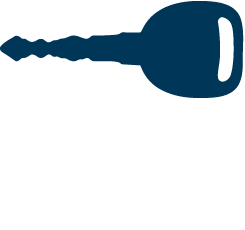Whether it’s from the bump of a wayward shopping cart or the key of an angry passer-by, scratches to your car’s paint job are practically inevitable.
But such dings may soon have a bright side, thanks to a self-healing polymer developed by macromolecular scientist and engineer Stuart Rowan, PhD, who found an unusual way to make scratches disappear—with just a flash of light.
Rowan created a compound different than conventional polymers, which consist of long, chain-like molecules. Rowan’s material is composed of smaller molecules assembled into longer chains, using metal ions as “molecular glue.”
Thirty seconds under intense UV light can make scratches a memory, as the light causes the polymer structures to become temporarily unglued, transforming the originally solid material into a liquid that flows easily. When the light is switched off, the material reassembles and solidifies again, restoring its original properties.
Rowan and his team are refining the coating for commercial applications and hope it may one day save not only your car, but perhaps your furniture and floors as well.


























